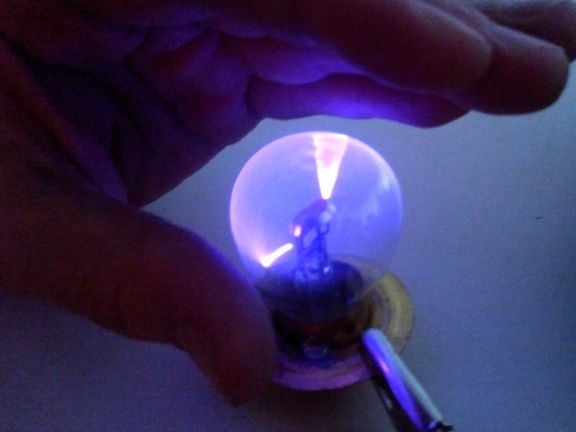
If you want to make a beautiful device in the spirit of Tesla, which would demonstrate the beauty of electric current, then you can try to create a "plasma ball". The device consists of two parts: a high voltage generator and an incandescent lamp. But in fact, a “plasma ball" is an incandescent lamp in which instead of standard light you will see electric arcs going from the center to the touch point of the fingers on the surface of the lamp. Agree, pretty pretty? All you need to create this device is to follow the instructions provided in this article. And of course, a small set of materials, a list of which you can find below.
To make such a toy, which will undoubtedly decorate your interior, we need:
1) A standard incandescent lamp, which will become a "plasma ball".
2) Power adapter for 12 volts and 5 amperes.
3) Powerful transistor like KT-927 or similar. The main thing is that the power and gain should not be inferior.
4) You can also work with a transformer from TVS-110 L6 or TVS-110 LA, you can get them from old tube TVs, or search in the radio parts store. They will be used to make a high voltage source to power the lamp itself.
By the way, a source made on the basis of these transformers can be used as for generating a high voltage current for a "plasma ball", but it is also useful for demonstrating other great experiments with current: corona and arc discharges, a fluorescent lamp lit in the hands, a ladder Jacob and many others.
Care must be taken when working with electric current. Before starting work on creating this fixtures, the author recommends that everyone familiarize themselves with safety precautions.
To begin with, we begin to manufacture a high voltage generator. The main element will be a lowercase output transformer, aka TVS-110 LA. Below is a diagram, following which, the author has achieved a voltage of approximately 90 kV, excellent power, as well as reliability.
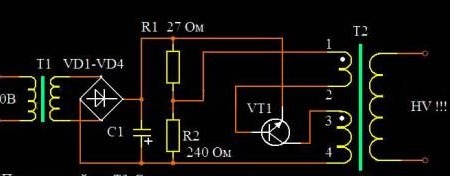
The TVS transformer needs a remake to our needs. It is necessary to remove the winding and reinstall it, but with fewer turns. The winding of turns for a fuel assembly should be approximately 1-2 = 5 turns, 3-4 = 25 turns of wire, the diameter of which is 1 mm. But the whole selection is purely experimental, since it all depends on both the transistor model and the state of the winding.
The assembly itself will look something like this:
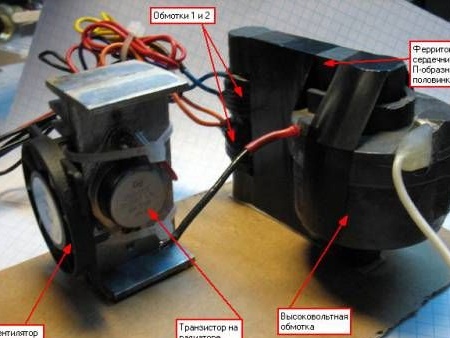
Another variant :
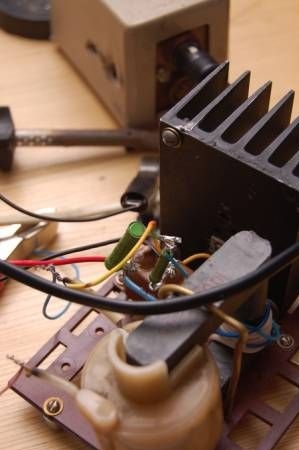
Actually, having assembled this high-voltage source and connecting an incandescent lamp to it through the output of a modernized transformer, we get the "Plasma ball", which we wanted to assemble.
Below is a picture where you can see the discharge in an incandescent lamp, the electrodes of which are the finger and the inner spiral of the lamp. It is worth noting that the atmosphere of the lamp is filled with gas agronom under low pressure.
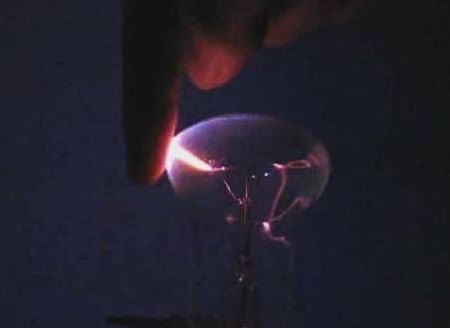
In conclusion, an important fact: thanks to the assembled converter, which served as a power source for the "plasma ball", it is possible to conduct many more, no less interesting experiments in the field of high voltage. Believe me, the ion engine, the small stairs of Jacob, the electric arc will be a very colorful demonstration of the work of electric current.
